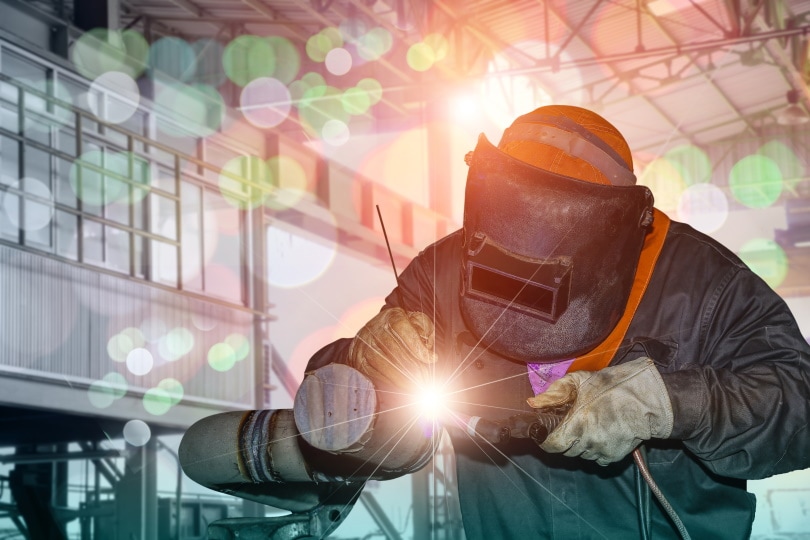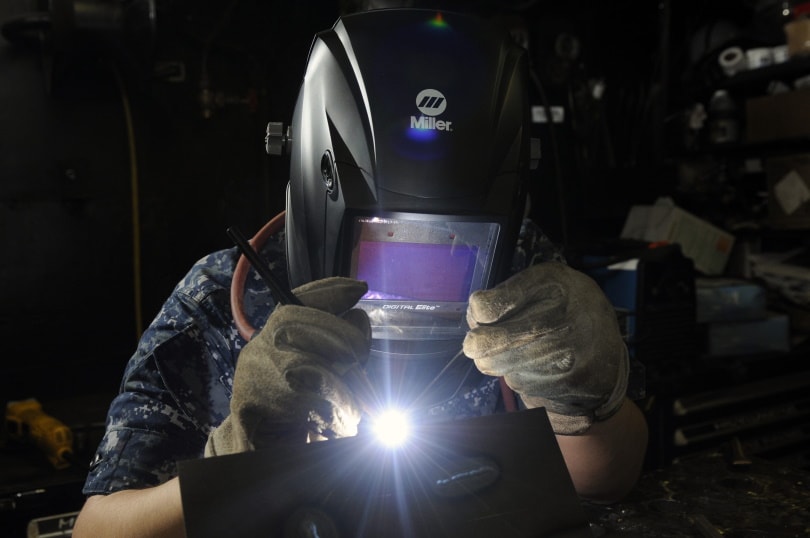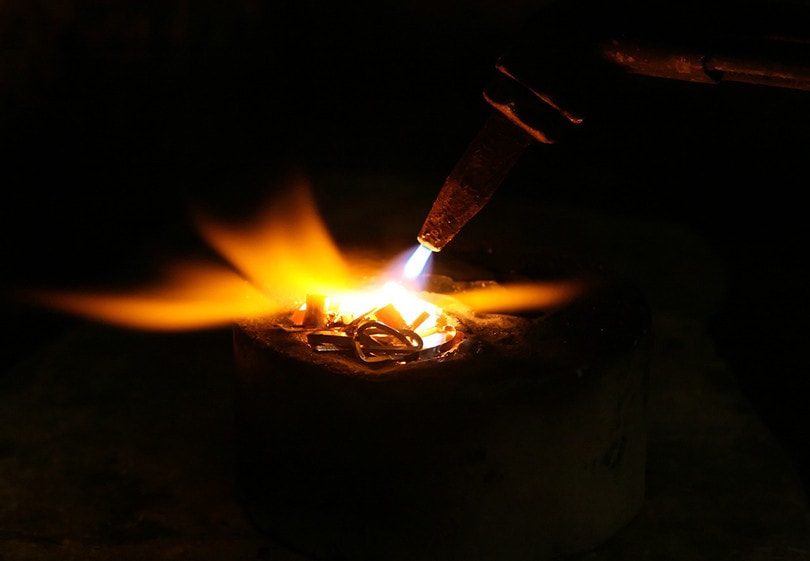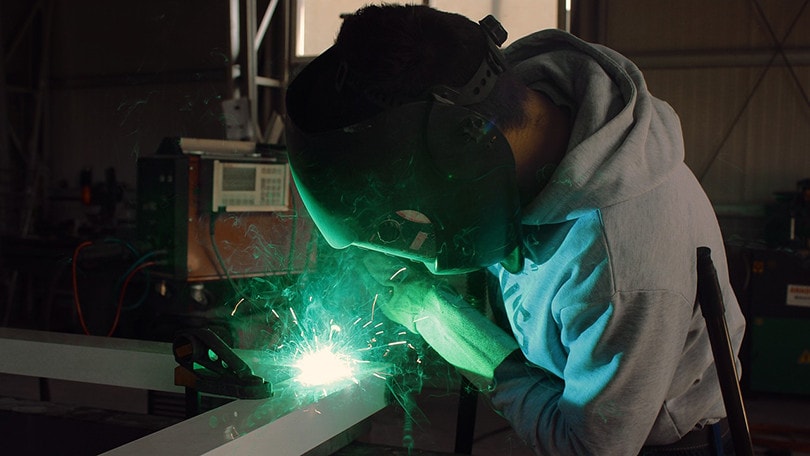Who Invented Welding & When? (History of Welding)
-
Pete Ortiz
- Last updated:

Many inventions have taken place throughout history. The same goes for welding-it has been around for decades. Besides, the first welding methods have been used by early humans who created artwork, tools, and structures that lasted longer than their hand-made counterparts.
So, who invented welding? Where did this technology come from? We’ll answer these and more questions you may have about welding history in this handy guide. Keep reading to learn more!
The History of Welding
There’s a long and rich history of welding. The search for methods to join metals dates back thousands of years. We all know that without welding, modern society would not be possible.
But many people don’t know the history of how we got here. The history of welding is a fascinating story worth learning. Also, the development of welding was a long and slow process.
The first person to invent welding was Nikolay Slavyanov in November 1888, but in this article, we’ll further break down the history of welding over the years.
The Middle Ages
While many people associate welding with modern technology, it has been used for thousands of years. It was first used in the Middle Ages. Besides, ancient civilizations used some forms of welding to create weapons and tools. Ancient Egyptians and Greeks developed this technique, but it wasn’t until the 19th century that the craft became common.
Bronze welding began in the Bronze Age. The Egyptians used it around 2000 BC. They fabricated small golden circular boxes and even pressure-welded the lap joints. The Greeks were also skilled metalworkers who knew how to use fire to melt metals into new forms.
Later during the Iron Age, people in the eastern Mediterranean region and Egyptians welded iron pieces. Other cultures in Asia and Africa developed similar techniques as early as 1000 BC. But it was not until the Industrial Revolution that welding became popular in Europe and America. Many types of welding developed during this period. They improved manufacturing processes and created stronger materials used in construction projects.
The 1800s: Discovery of Acetylene

In 1836, Edmond Davy of England discovered acetylene, a gas that produces a hot flame when mixed with oxygen. Its discovery allowed the development of modern welding.
Later, still in the 1800s, Sir Humphry Davy discovered that the combination of chlorine and carbon produced acetylene.
Arc lighting became well-known due to the invention of a gas generator in the middle of the 19th century. Towards the end of the 19th century, gas welding started. At the same time, the technique of using metal and a carbon arc to join metals was also developed.
1880: Joining Lead Plates Using the Heat from an Arc
In 1877, Auguste De Meritens invented the first arc welding machine. The arc between a carbon electrode and the workpiece created enough heat to melt the base metal. By 1880, he had developed a system for joining lead plates with his invention.
The machine consisted of two electrodes supported on a frame with wheels. This way, they could move closer together or further apart. One of the electrodes was fed into position manually. The other one moved along its track. An operator pushed on a lever at the back of the machine.
But his student, Nikolay, was given a patent to carry out welding. Nikolay worked at a laboratory in France. Together with Stanislaus Olszewski (a fellow Russian), they received a British patent in 1885 and an American patent in 1887.
That marked the start of carbon arc welding and actual welding. However, their efforts were limited to carbon arc welding only. The best thing is that Nikolay and Olszewski could weld iron and lead. Carbon arc welding gained popularity in the late 1890s and the beginning of the 1900s.
1890: First U.S. Patent for Arc Welding

The patent was issued to Charles L. Coffin of Detroit, Michigan. It was used to weld steel plates using an electric current generated between two carbon electrodes. They were also used to strike the arc and melt the metal.
The patent included a method for joining different metals. They used different filler metals (alloys) that could melt at different temperatures. It made it possible to use a single welding machine for many applications.
It was the first recorded metal to melt from the electrode. The electrode was carried across the arc to create a weld. It deposited filler material in the weld joint. Around the same time, N.G. Slavianoff (a Russian) came up with a similar idea.
1900: Introduction of Coated Metal Electrode and Other Welding Processes
Modern welding technology did not appear until about 1901. Strohmenger (a British man) was the first to introduce a coated metal electrode in England. The metal electrode had a thin line or clay coating but had a stable arc.
Between 1907 and 1914, Oscar Kjellberg (a Swedish) discovered a coated electrode. The bare iron wire was immersed in a thick mix of silicate and carbonate to produce stick electrodes. Then, it was allowed to dry.
The first welding processes developed were resistance spot, arc, seam, and gas welding. These early methods were used for many years before developing more modern processes. Elihu Thompson discovered resistance welding. He also used his patents dated between 1885 and 1900.
In 1903, thermite welding was invented. Goldschmidt (a German) invented this kind of welding for railroad rails. During this period, gas welding and cutting were also developed. Welding and cutting developed when a blow torch was introduced in 1887.
1920: Introduction of Automatic Welding

Welding was used extensively during the World War I from 1914 to 1918. Automatic welding was introduced after the 1st World War by P.O Nobel (he worked in the General Electric Company in the U.S.). This invention made it possible to form more complex shapes and designs.
Automatic welding was used to weld worn crane wheels and motor shafts. It also created back axle housings in the automobile industry.
Many welding electrodes were developed in the 1920s. Shielded metal arc welding was also introduced in the 1920s. The first gas used in shielded welding was hydrogen. Langmuir and Alexander discovered hydrogen as a shielding gas.
P.K. Devers and H.M. Hobert were also carrying out tests on two shielding gases (helium and argon). They applied for patents in 1926. They described the use of these gases for welding, cutting, heating, and melting metals.
1930: Development of Stud Welding
In the 1930s, a process called stud welding was developed by Robinoff. It’s a form of resistance welding that uses high-frequency currents to heat the welded material. The stud is inserted into the joint. Current flows through it, causing it to expand and form a bond with the other materials.
Stud welding became well-known in the construction and shipbuilding industries. The National Tube Company also developed another welding process during this time. It was known as smothered arc welding. As time went by, submerged arc welding replaced stud welding.
The 1940s: Full Development of Gas Tungsten Arc Welding (GTAW) and Gas Shielded Metal Arc Welding (GMAW)

C.L. Coffin had come up with this idea in the 1890s, but it was realized in 1941. The development of GTAW (Gas Tungsten Arc Welding) brought welding to a new level.
The method uses a non-consumable tungsten electrode. It also uses an inert shielding gas to protect the weld puddle from contamination. In 1948, GMAW was developed at Battelle Memorial Institute. It was a milestone in welding history.
The 1950s: Development of Other Welding Processes
In 1953, Novoshilov and Lyubavskii started using carbon dioxide gas. They were welding with consumable electrodes. Carbon dioxide was cheaper than other shielding gases. So, it became a preferred choice by many welders.
One year later, an inside-outside electrode was created. It didn’t require a shielding gas. Other welding processes were invented in the 1950s. They include:
- Electron-Beam Welding: It uses a focused beam of high-velocity electrons to join metal segments. It’s well-known in the American aircraft engine and automobile industry.
- Electroslag Welding: It’s a method of joining metal parts heated with an electric arc between the workpieces and a consumable electrode.
- Friction Welding: It’s also known as pressure welding. Friction welding is joining two or more metal parts by causing friction between them without melting them. The welding process was developed in Russia (formerly the Soviet Union).
The 1960s: Advanced Welding Processes

In this decade, more welding technologies have been developed. They include:
- Spray-Type Arc Transfer: It’s an outdated welding method that has been around for decades. The process involves spraying the material onto the surface of a workpiece, then covering it with a protective shell and melting it with an arc.
- Laser Welding: It’s a technique for joining materials using a high-power laser beam. Besides, it employs non-contact fusion bonding. Laser welding is used in industrial manufacturing and robotic automotive.
Modern Day Welding
These days, welding has become safer, more effective, precise, and fast. Many welding processes have also come up. These processes are continually developing. There’s ongoing research in industries such as space, nuclear, shipbuilding, transportation, and more.
Besides, modern welding processes use sustainably produced products. So, welding has developed and advanced gradually over many years.
Conclusion
Welding is a valuable skill that more people should know and understand how to use. The craft can open a world of new possibilities when working with metal.
The history of this wide-ranging and varied welding field is fascinating. Many inventors have contributed to the process, and it continues to evolve with new technology. So, next time someone asks, “Who invented welding?” you’ll have the answer. You’ll also enjoy welding at a deeper level. Keep exploring!
See also:
- Who Invented the Toilet and When? History of the Toilet!
- Who Invented the Electric Generator, and When? (History)
- Who Invented the Toaster, and When? (History)
- Welding in the Middle Ages
- The 1800s – Discovery of Acetylene
- Auguste De Meritens invented the First Arc Welding Machine
- 1890 – First U.S Patent for Arc Welding
- 1900 – Introduction of Coated Metal Electrode
- 1920 – Introduction of Automatic Welding
- 1930 – Development of Stud Welding
- The 1940s – Full Development of Gas Tungsten Arc Welding (GTAW) and Gas Shielded Metal Arc Welding (GMAW)
- The 1950s – Development of Other Welding Processes
- WHO INVENTED THIS
- SCIELO
- INDIANA DEPARTMENT OF EDUCATION
- MCGILL
Featured Image Credit: awansak, Shutterstock
Contents


